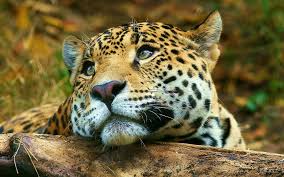Free Wallpapers And Backgrounds Biography
Kenya is a country in East Africa that lies on the equator. With the Indian Ocean to its south-east, it is bordered by Tanzania to the south, Uganda to the west, South Sudan to the north-west, Ethiopia to the north and Somalia to the north-east. Kenya has a land area of 580,000 km2 and a population of a little over 43 million residents. The country is named after Mount Kenya, a significant landmark and second among Africa's highest mountain peaks. Its capital and largest city is Nairobi.
Kenya has a warm and humid climate along its coastline on the Indian Ocean, which changes to wildlife-rich savannah grasslands moving inland towards the capital. Nairobi has a cool climate that gets colder approaching Mount Kenya, which has three permanently snow-capped peaks. The warm and humid tropical climate reappears further inland towards lake Victoria, before giving way to temperate forested and hilly areas in the western region. The North Eastern regions along the border with Somalia and Ethiopia are arid and semi-arid areas with near-desert landscapes. Lake Victoria, the world's second largest fresh-water lake (after Lake Superior in the US and Canada) and the world's largest tropical lake, is situated to the southwest and is shared with Uganda and Tanzania. Kenya is famous for its safaris and diverse world-famous wildlife reserves such as the East and West Tsavo National Park, the Maasai Mara, Nakuru National Park, and Aberdares National Park.
The African Great Lakes region, of which Kenya is a part, has seen human habitation since the Lower Paleolithic period. The Bantu expansion reached the area from West-Central Africa by the first millennium AD, and the borders of the modern state comprise the crossroads of the Niger-Congo, Nilo-Saharan and Afro-Asiatic ethno-linguistic areas of the continent, making Kenya a truly multi-cultural country. European and Arab presence in Mombasa dates to the Early Modern period, but European exploration of the interior began only in the 19th century. The British Empire established the East Africa Protectorate in 1895, known from 1920 as the Kenya Colony. The independent Republic of Kenya was founded in December 1963. Following a referendum in August 2010 and adoption of a new constitution that is to replace the old one that was inherited from the British at independence, Kenya is now divided into 47 counties that are semi-autonomous units of governance. These units are expected to be fully implemented by August 2012 – in time for the first general election under the new constitution. The counties will be governed by elected governors and will operate independent of the central government in Nairobi.
The capital, Nairobi, is a regional commercial hub. The economy of Kenya is the largest by GDP in East and Central Africa. Agriculture is a major employer and the country traditionally exports tea and coffee, and more recently fresh flowers to Europe. The service industry is a major economic driver, mostly the telecommunications sector, and contributes 62 percent of GDP. Kenya is a member of the East African Community.
At 580,367 km2 (224,081 sq mi), Kenya is the world's forty-seventh largest country (after Madagascar). It lies between latitudes 5°N and 5°S, and longitudes 34° and 42°E. From the coast on the Indian Ocean, the low plains rise to central highlands. The highlands are bisected by the Great Rift Valley; a fertile plateau lies in the east. The Kenyan Highlands comprise one of the most successful agricultural production regions in Africa. The highlands are the site of the highest point in Kenya (and the second highest in Africa): Mount Kenya, which reaches 5,199 m (17,057 ft) and is the site of glaciers. Mount Kilimanjaro (5,895 m/19,341 ft) can be seen from Kenya to the South of the Tanzanian border.
Kenya's climate varies from tropical along the coast to temperate inland to arid in the north and northeast parts of the country. Kenya receives a great deal of sunshine all the year round, and summer clothes are worn throughout the year. It is usually cool at night and early in the morning inland at higher elevations. The "long rains" season occurs from March/April to May/June. The "short rains" season occurs from October to November/December.








Kenya is a country in East Africa that lies on the equator. With the Indian Ocean to its south-east, it is bordered by Tanzania to the south, Uganda to the west, South Sudan to the north-west, Ethiopia to the north and Somalia to the north-east. Kenya has a land area of 580,000 km2 and a population of a little over 43 million residents. The country is named after Mount Kenya, a significant landmark and second among Africa's highest mountain peaks. Its capital and largest city is Nairobi.
Kenya has a warm and humid climate along its coastline on the Indian Ocean, which changes to wildlife-rich savannah grasslands moving inland towards the capital. Nairobi has a cool climate that gets colder approaching Mount Kenya, which has three permanently snow-capped peaks. The warm and humid tropical climate reappears further inland towards lake Victoria, before giving way to temperate forested and hilly areas in the western region. The North Eastern regions along the border with Somalia and Ethiopia are arid and semi-arid areas with near-desert landscapes. Lake Victoria, the world's second largest fresh-water lake (after Lake Superior in the US and Canada) and the world's largest tropical lake, is situated to the southwest and is shared with Uganda and Tanzania. Kenya is famous for its safaris and diverse world-famous wildlife reserves such as the East and West Tsavo National Park, the Maasai Mara, Nakuru National Park, and Aberdares National Park.
The African Great Lakes region, of which Kenya is a part, has seen human habitation since the Lower Paleolithic period. The Bantu expansion reached the area from West-Central Africa by the first millennium AD, and the borders of the modern state comprise the crossroads of the Niger-Congo, Nilo-Saharan and Afro-Asiatic ethno-linguistic areas of the continent, making Kenya a truly multi-cultural country. European and Arab presence in Mombasa dates to the Early Modern period, but European exploration of the interior began only in the 19th century. The British Empire established the East Africa Protectorate in 1895, known from 1920 as the Kenya Colony. The independent Republic of Kenya was founded in December 1963. Following a referendum in August 2010 and adoption of a new constitution that is to replace the old one that was inherited from the British at independence, Kenya is now divided into 47 counties that are semi-autonomous units of governance. These units are expected to be fully implemented by August 2012 – in time for the first general election under the new constitution. The counties will be governed by elected governors and will operate independent of the central government in Nairobi.
The capital, Nairobi, is a regional commercial hub. The economy of Kenya is the largest by GDP in East and Central Africa. Agriculture is a major employer and the country traditionally exports tea and coffee, and more recently fresh flowers to Europe. The service industry is a major economic driver, mostly the telecommunications sector, and contributes 62 percent of GDP. Kenya is a member of the East African Community.
At 580,367 km2 (224,081 sq mi), Kenya is the world's forty-seventh largest country (after Madagascar). It lies between latitudes 5°N and 5°S, and longitudes 34° and 42°E. From the coast on the Indian Ocean, the low plains rise to central highlands. The highlands are bisected by the Great Rift Valley; a fertile plateau lies in the east. The Kenyan Highlands comprise one of the most successful agricultural production regions in Africa. The highlands are the site of the highest point in Kenya (and the second highest in Africa): Mount Kenya, which reaches 5,199 m (17,057 ft) and is the site of glaciers. Mount Kilimanjaro (5,895 m/19,341 ft) can be seen from Kenya to the South of the Tanzanian border.
Kenya's climate varies from tropical along the coast to temperate inland to arid in the north and northeast parts of the country. Kenya receives a great deal of sunshine all the year round, and summer clothes are worn throughout the year. It is usually cool at night and early in the morning inland at higher elevations. The "long rains" season occurs from March/April to May/June. The "short rains" season occurs from October to November/December.
Free Wallpapers And Backgrounds
Free Wallpapers And Backgrounds
Free Wallpapers And Backgrounds
Free Wallpapers And Backgrounds
Free Wallpapers And Backgrounds
Free Wallpapers And Backgrounds
Free Wallpapers And Backgrounds
Free Wallpapers And Backgrounds
Free Wallpapers And Backgrounds
My Own Wallpapers / Desktop Backgrounds (With Download Link)
Free Wallpapers And Backgrounds
No comments:
Post a Comment